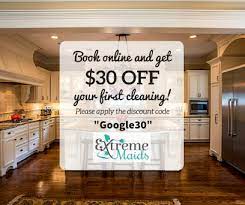In years gone by, strong, toxic and highly abrasive chemicals such as bleach were often used to clean our homes, without a second thought being given to the potential harm this can cause to both humans and the planet. Nowadays, however, cleaning products and practises have become far more responsible and ethical, and many homeowners and cleaning companies alike, turn to non-toxic products to keep their homes hygienically clean.
That said, it isn’t always easy to know whether the products we buy in the store are truly natural, or whether we’re falling victim to cleverly deceptive marketing ploys and false labelling when we buy them. To help you get a better understanding of what products are truly clean and green, here’s a short guide:
Natural ingredients can still be toxic
While ammonia and hydrogen peroxide are both derived from a natural product, both can be very harmful chemicals if not used in the correct way. Natural is a term that is often bandied around to encourage buyers to purchase a product, but natural can still mean toxic – so beware!
Cleaning products that are botanical or plant-based are a good buy
Non-toxic and non-abrasive, plant-based cleaning products are far safer to use if you’re looking for a product that’s truly natural, and since the chemicals are typically kinder to skin and better for people with respiratory problems, they’re a great choice for office and school environments, and homes in which sensitive or vulnerable adults or children live.
Be wary of marketing ploys
Being able to truly understand the cleaning product you’re buying, does mean reading the ingredients instead of just reading the marketing blurb. Watch out for words such as ‘eco-friendly’, which don’t always indicate a truly green product, and avoid buying any product that states it’s ‘biodegradable’, since almost everything we buy will biodegrade over time.
What is a truly green cleaning product?
Any product that is advertised as being ‘phosphate-free’ is usually a safe choice, and indicates that the product is genuinely green. High levels of phosphates going down our sinks and into our waterways, can cause big problems with algae and ultimately, destroy our waterways and damage the fish and wildlife living there.
If you’re finding the labels simply too confusing (and many do), you can always turn to a certified body who can provide you with a bona fide list of natural and green cleaning products and ingredients to look out for.
Stick to traditional products
Basic store cupboard essentials such as bicarbonate of soda, vinegar, salt and lemons, are being used more and more these days not just by individual homeowners who want to clean their homes without harming themselves or the environment, but by professional cleaning services, too. While a little more elbow grease might be required to achieve the desired result, such products are cheap, and truly green.
With a little research, know-how, and patience when it comes to reading the labels, you can easily make more environmentally friendly conscious choices when it comes to the products you buy for cleaning your home clean.

